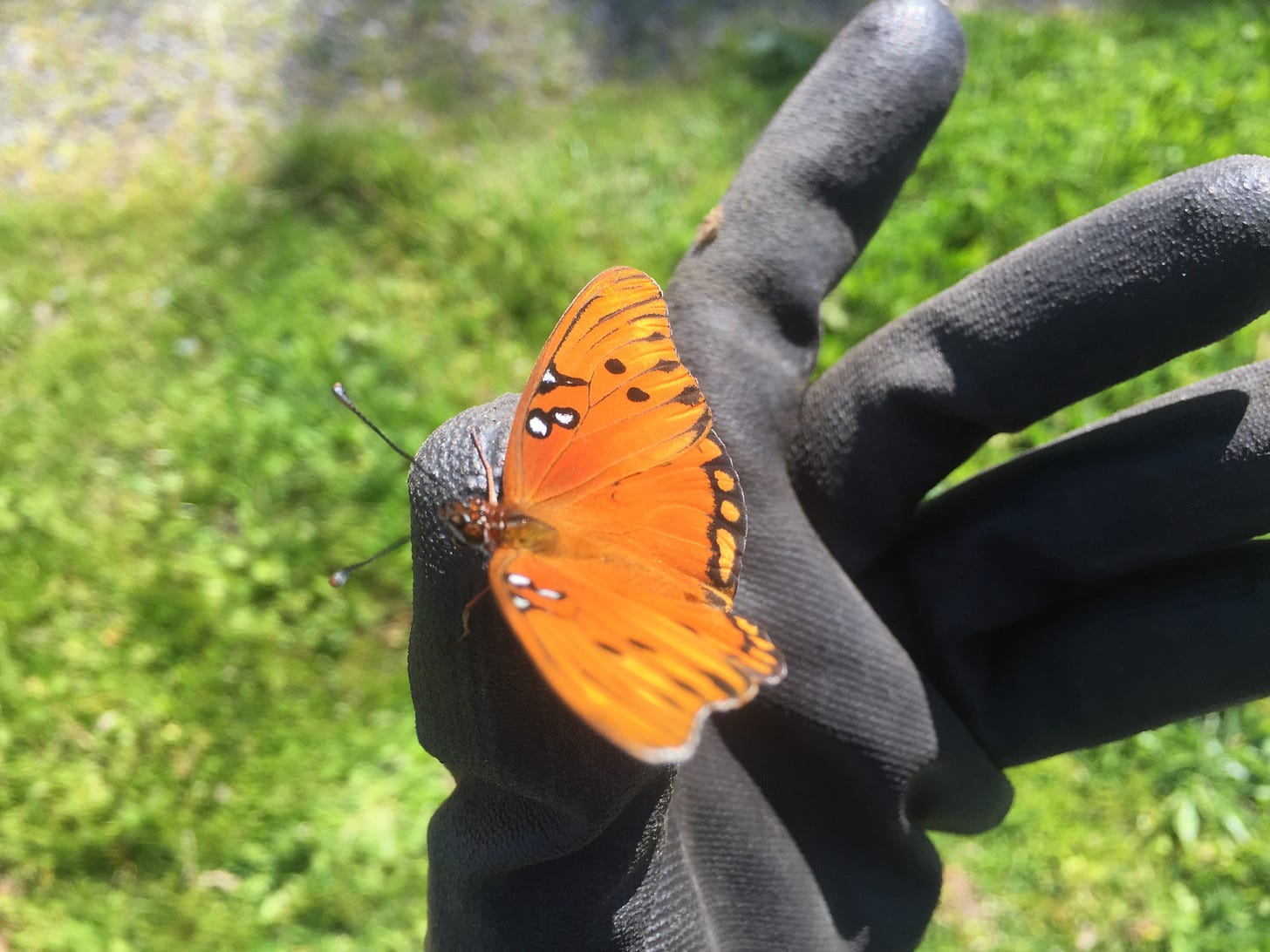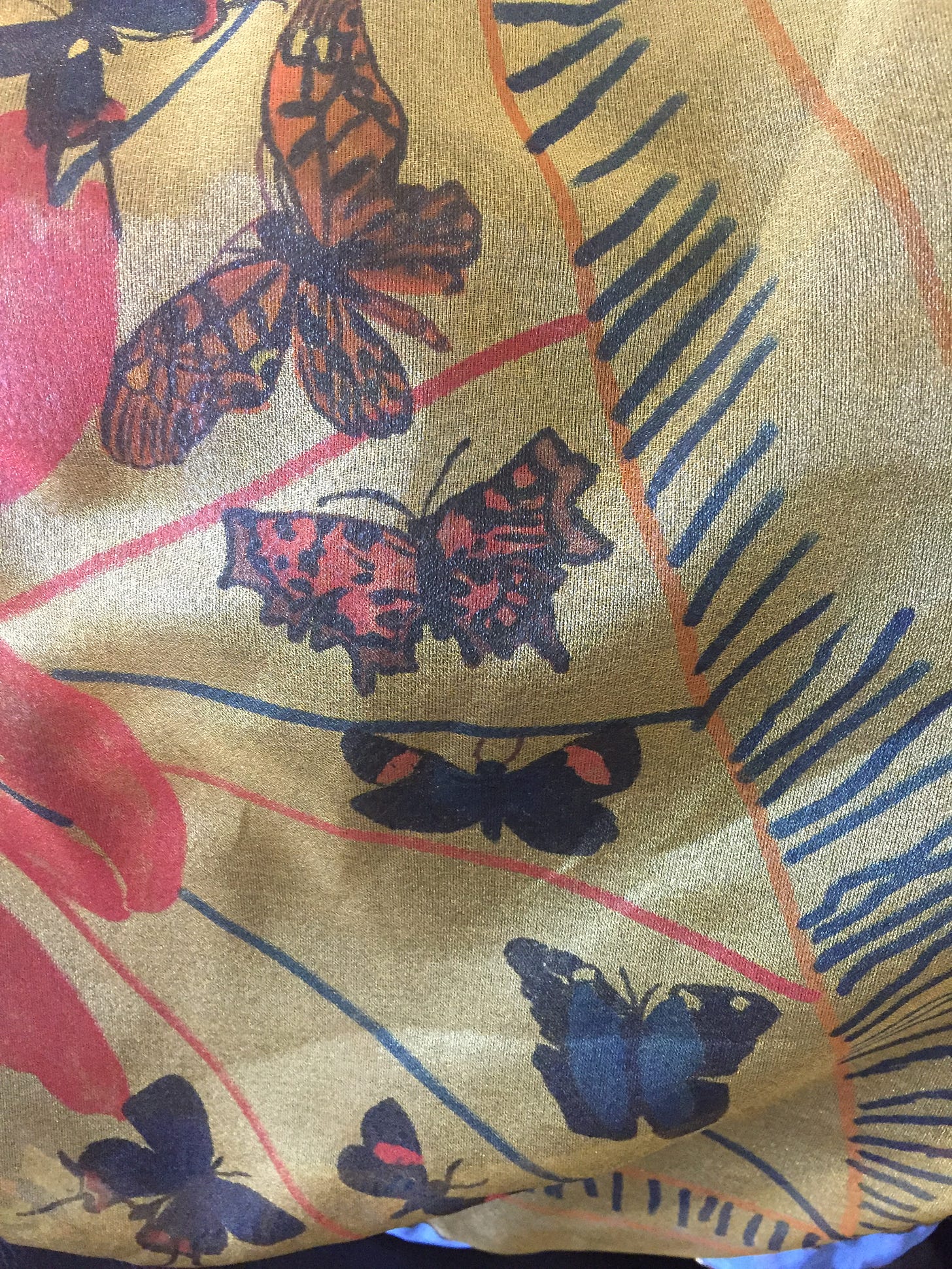What is the signal from the universe that tells us we’re okay: that we’ve done a good job with this web of memory and circumstance we call our lives?
If there is such a signal, I think it must play its music inside us, where no one else can hear it.
It’s not a literary prize or a book on anyone’s bestseller list. It’s not money in the bank or an entry on Wikipedia. I can assure you that it doesn’t even come from aging well or realizing that, in those photos of yourself you disliked so much ten years ago, you actually looked pretty good!
It’s not about ceasing to strive. It’s not about giving up on accomplishing more.
It’s about serenity. It’s that reassurance and sense of safety that I, for one, never got as a child. It’s that ideal inner parent that says, “You’re lovely and I couldn’t feel prouder of you than I do already, than I have from the start.”
It’s a song the birds are singing every day. It’s the sound the wind is making in the orchestra of leaves above your head.
It’s already yours, this thing you’ve longed for. This thing you keep scrolling for. This thing you keep hoping to hear.
***
The young have an unmatched beauty, there’s no doubt about it.
But being young can also be quite painful. Filled with dissatisfaction about oneself and the world in which we find ourselves. Filled with anguish, loathing, and longing.
I can remember how very uncomfortable I felt in my own skin for the longest time. Until pretty recently (although I know that must sound strange, coming from someone in her seventh decade). Honestly, I wouldn’t want to relive my youth, or even my somewhat tortured middle age, all over again.
I cherish my friendships, my motherhood, all the love, and all the wondrous joys of my travels through the world and my own imagination. I hope to do more of all of it, and do some of it better, while I’m still able to breathe and walk and think and dance and write.
***
Photo by Barbara Quick—and that’s my hand in the gardening glove!
Why is our species so stuck on our youthful phase? It may be that the most glorious moments come at the very end.
I’m taking a lesson from the butterfly, who lives out the four stages os its life-cycle with courage and grace. From egg to caterpillar to chrysalis, to all the glory of its evanescent final phase: two weeks to (at most) eleven months, to exist in the physical world as one of Nature’s most sublimely beautiful creations.
That homely and hard-working caterpillar, hatched from a little egg laid on a leaf, secretes the materiel for its own changing-booth. Move over Superman!
Inside the hard shell of the butterfly’s chrysalis phase, it digests itself, for God’s sake, and starts over. Part by part, organ by organ, it makes itself into something new. And then, defogging the window (out of pride and joy?), it wriggles and shakes like a samba dancer till the shell cracks and falls away.
The gorgeous twin paintings of the butterfly’s wings drip dry. And—from another life, another consciousness, buried deep inside its DNA—it remembers how to fly.
Who knows how long this butterfly, such a long time in the making, will be able to glory in this final phase before winter or a predator or Time itself brings it to an end: kills it, eats it, exhausts and sickens it?
I’m determined not to waste one single moment, ever again, on being unhappy!
***
This poem is long but close to my heart. A shorter version was published by Emily Ferrara in Pendemics Journal in 2020.
Butterflies Sheltering in Place, Day 7 Heeding the call for homemade face-masks, I find my old sewing-machine where I parked it, ten years ago, in the wreckage of a storage shed— nestled in a basket like a brooding hen, the heavy plastic bag I’d put over it shredded by time and rats. Wearing rubber gloves, I carry my old Kenmore onto the porch, where I sit in the glorious last light of the late afternoon filled with thunder clouds in the north and lit by a rainbow, closer by. Under the benediction of that sky, I clean off the dust and dirt and cobwebs till the hard plastic gleams again, And I remember my emotional connection to this sewing machine and the ones that came before. That first Home Ec class in junior high, when all the girls were assigned to make an apron. Afterwards I asked to take a summer course at the Singer Sewing Machine store, and made an A-line skirt, learning to align an army of straight-pins at right angles to the edges of the tissue-paper pattern pieces, affixing them to the fabric— and how to cut through both with skill. I learned to love a seam-ripper, with which one can undo even the most minutely stitched mistakes. That first pair of sewing scissors, which I have still, a gift from my father, who, before the divorce, scratched my name into the stainless steel with calligraphic precision. I sewed a paisley Nehru shirt for my brother, and a plain white linen one for his best friend. A salmon-colored, crisp cotton dress for my mother, who later requested a sky-blue, square-necked silk blouse like the one I confected for myself, with handmade buttonholes edged by a tight little blanket-stitch. Was that before or after I’d called her a bitch and swore that I hated her? I wish now that I’d held my tongue, no matter how egregiously it seemed that she wronged me. Throughout those lonely teenage years, I sat long hours at my machine, raising and lowering the presser-foot, guiding the fabric underneath it, the whir of the motor in my ears, the needle dipping down and down again, like a derrick drilling for oil. I tailored a camel-colored, cashmere suit, fully lined. Interfacing compelled the lapels to lie flat against my body. I learned the trick of making bound buttonholes, every stitch invisible. I could see so well close-up then with my young eyes. What was the future I imagined for myself in these clothes, as I sat and sewed? Sitting before my machine now, and cleaning off the grime, I think about the great-grandmother I never knew, a tailor by profession, in Russia, under the Tsar. Tailoring skills came to me naturally, by way of DNA, before I lost them in the swirl of marriages and motherhood and trying to make my way as a writer. Too poor to buy the fabrics I favored, or even the patterns for making them— those Vogue numbers with their oversized envelopes and elegant designs, each pattern costing as much as a silk blouse I could find, if I looked hard and had luck, in a thrift shop or at the Goodwill. Pregnant with my first and only child, I felt sure that I would make all his clothes— and yet there was no time. Baby-clothes have the lifespan of a butterfly before one’s child grows out of them. I became a hunter for consignment clothes, some of them never used. I carried my baby in a sling and then a front-pack— and, later, in a Swedish baby backpack, all of which I found at those same stores while I searched for treasures to array us: silken velvet caps to keep his head warm during that first winter when he didn’t yet have any hair. Always on the lookout for things that were finely made. For the Halloween parade at his pre-school, when Julian was almost four, he told me he wanted to be Butterfly Man, a super-hero born in his imagination. I took out my sewing machine and fashioned a cape from some diaphanous golden fabric I found and used an illustrated field-guide to the butterflies to paint it all over with Monarchs and Swallowtails and the iridescent blue wings of Morpho menelaus. Edged all around with a golden silk cord, fastened with an antique cloisonné clasp. With his abundant blond hair, slim silhouette and olive-green eyes, he seemed made for his disguise. I took my sewing machine out again nearly every Halloween to transform my son into whomever he wished to be: One year he was the Pokémon trainer, Ash Ketchum (known as Satoshi in Japan). Another year, more labor intensive for me, he was a furry brown bear. Both the cape and Satoshi’s blue-and-white jacket hang in the closet where I keep the clothes I rarely use. My son is twenty-seven now, a budding engineer who models the wind in long, elegant equations that fill whiteboards and hold the promise to improve the next generation of wind farms, and make the world a better place. His golden hair is brown now, and reaches to his waist. He lives and studies far away, although we speak at length at least once a week and, lately, more. Today I wonder, filled with fear, will we ever see each other again? I place the butterfly cape over my shoulders, hoping to unleash a super-hero lurking inside of me. Tomorrow, after I’ve done some more research, I’ll remind myself how to thread the Kenmore— and get to work. Copyright © 2024 by Barbara Quick
A detail of the cape Julian and I made together when he was four years old. He’s thirty now and traveling the world in conjunction with his research at the Risø campus of Danish Technical University’s Wind Energy Division. Always an extraordinary child (says his proud mom!), he chose his super-hero identity with prescience and wisdom. In two weeks, I’ll be flying off to Copenhagen to visit him!
If your book-buying budget is depleted now, I hope you’ll consider asking for The Light on Sifnos, What Disappears, A Golden Web, or Vivaldi’s Virgins from your local library. If they don’t have my books on their shelves, you can fill out an online form to request them. I’m so grateful that my 2007 novel, Vivaldi’s Virgins, is already in the catalogue of many (most?) libraries around the country (and in libraries in 12 other countries abroad). You can buy it directly from HarperCollins or at any online bookstore. You can buy What Disappears directly from Regal House (best for me!) here. Did you know that authors earn something like 38 cents for books sold on Amazon?
It’s better for authors if you buy your books from the publisher. Amazon is (surprise, surprise!) a great big rip-off for writers, even though many of us (guilty as charged!) sometimes use it—and all of us (guilty as charged again!) track our numbers on Amazon. It’s an occupational addiction.
If you’re passing through the Hudson River Valley, you can find several of my titles at the Book Cove in Pawling.
Do support your local bookstore! And buy new (not used) copies of books by your favorite living writers. It’s a cherished but altogether mistaken notion that we make a good living as writers. But with very few exceptions, we’re working as hard and earning as little as butterflies sipping nectar from late-blooming summer flowers.
This poem of mine, read here by Garrison Keillor, is very much to the point.
For the best experience, read “Life-boat Made of Words” on the SubStack app. It’s a free download—and it’ll give you access to the private writings of lots of wonderful writers.
Leave me a heart! I love you. ❤️






